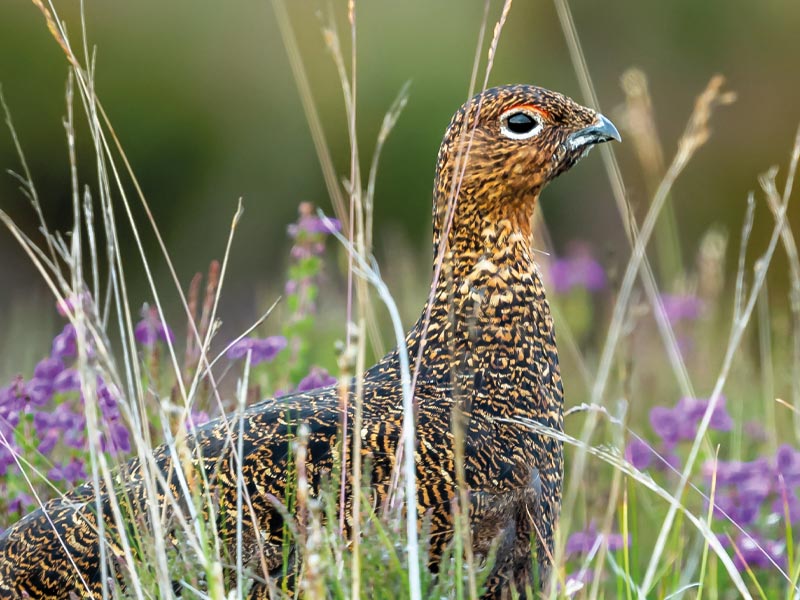Grouse are looking quite good…
...but only where there was a good stock left last year and then only in a few places!
I write each year pointing out how difficult it is to say with certainty how grouse are going to fair in August, when this article is penned in June! The added problem to forecasting grouse prospects at this time of the year, is that grouse broods tend to go very quiet in June. The chicks have developed into poults and have learnt from their parents to be much more cautious than when they were chicks running around without a care in the world. Keepers who could see broods clearly in May tend to get very pessimistic in the middle and end of June, thinking that those broods have “gone”, whereas they are just much more reclusive and as a result, very hard to see and count.
My forecast for the coming grouse season is that it will be quite good in some areas and very good in a few areas in England, but apart from the Moorfoots, maybe bits of Perthshire and the odd Moor in the Highlands perhaps particularly Angus, I am not at all optimistic for much of Scotland. I think most Moors in Scotland will be poor, including the Lammermuirs, which we had high hopes for earlier on. The winter was generally a good one for Grouse and the spring in the main has been good as well, but until very recently (at the time of writing), we did not have enough rain. What we need in terms of weather to be ideal for grouse production is a little bit of rain, reasonably frequently, in between a lot of warm weather. Whilst we had rain in the early spring, much of May and the early part of June was incredibly dry. Grouse chicks need moisture, insects need moisture and prolonged periods of very dry weather are not good for either of them. I think therefore, we will have seen a reduction in brood sizes on many Moors of at least a chick and possibly as much as two chicks, due to stress caused by inadequate moisture. Those moors which had water available “throughout” (and even wet Moors were very, very dry this year), speak of broods of Grouse all being at watering places. This brings with it its own problems, particularly the potential for the spread of disease as well as a build up of worms.
We are undoubtedly now seeing a build up of the Strongyle worm, with many Moors having picked up both cocks and hens dead this spring and early summer. The numbers of birds picked up does not indicate a massive problem (yet), because if there was a high worm burden over winter, you would expect to be picking up large number of dead and dying cocks in February when they are fighting for territory and also lots of hens dying of stress on the nest. However, I think that an increasing worm burden is going to be a problem this year and Moors will need to be very proactive in dealing with this, otherwise it could be a real problem this coming winter.
We are closer to finding a commercially available vaccine for Louping-ill, which is a massive problem in Scotland (kills up to 85% of all grouse poults affected) and is an increasing problem in the north of England. There is no doubt that sheep tick which is the carrier of Louping-ill have also seen a massive increase, pretty well throughout the moorland parts of the UK. Large numbers of sheep ticks on their own can also kill grouse chicks, but allied with Louping-ill, it is a massive problem and will usually prevent much of a shootable surplus on any affected Moor.
Our forecast is that whilst this will not be a record year anywhere, it could be fairly good in parts of the North Pennines and generally poor to very poor in Scotland. Those Moors which had a good stock will inevitably fair best. However, we do not think it will be a long season with probably relatively few October days, except on the bigger and very productive North of England Moors. Therefore, do not rely on there being lots of late days to rent cheaply.
Good Shooting!
Article written by: Mark Osborne (JM Osborne Rural & Sporting)
Photograph by: Ian Coley


